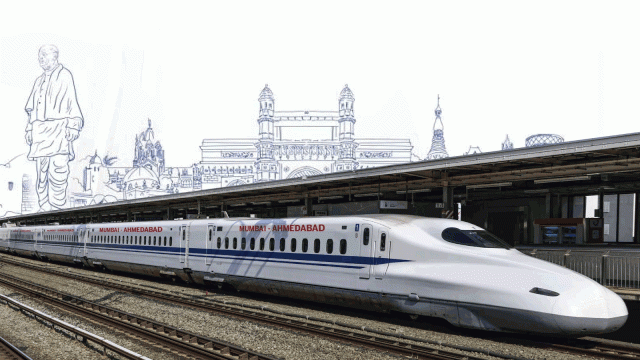In a groundbreaking move, India's Bullet Train is set to integrate 28 seismometers for early earthquake detection, a first in its history
- Posted on January 29, 2024
- Technology
- By Arijit Dutta
- 527 Views
India's high-speed rail takes a groundbreaking step as Ashwini Vaishnaw announces the integration of 28 seismometers into the Bullet Train. With strategic placements and advanced detection systems, this move prioritizes passenger safety, automatically triggering emergency brakes and power shutdown during seismic activity. The initiative, backed by Japanese Shinkansen technology, sets a global standard for high-speed rail safety.
 Image Source -www.quora.com
Image Source -www.quora.com
In
a historic move, India's ambitious Bullet
Train project is poised to implement cutting-edge safety measures by
incorporating 28 seismometers for early earthquake detection. Union Railways
Minister Ashwini Vaishnaw announced this groundbreaking initiative, emphasizing
a paramount focus on ensuring the safety of passengers traveling on the
high-speed rail corridor.
The
strategic integration of seismometers is designed to proactively detect
earthquakes, mitigating potential risks associated with high-speed rail
journeys. Out of the total 28 seismometers, 22 will be strategically placed
along the alignment of the high-speed rail corridor. Key locations such as
Mumbai, Thane, Virar, and Boisar in Maharashtra will host eight seismometers,
while Gujarat will see the installation of 14 in cities including Vapi,
Bilimora, Surat, Bharuch, Vadodara, Anand, Mahembadad, and Ahmedabad.
Additionally,
six seismometers, termed inland seismometers, will be deployed in regions prone
to earthquakes, including Khed, Ratnagiri, Latur, Pangri in Maharashtra, and
Adesar and Old Bhuj in Gujarat. This strategic placement reflects a meticulous
approach to covering areas susceptible to seismic activity.
The advanced detection systems embedded in these seismometers will be placed in traction substations and switching posts along the rail corridor. Operating based on the detection of earthquake-induced tremors through primary waves, these devices are programmed to automatically initiate a power shutdown upon identifying seismic activity. Subsequently, this triggers an emergency brake system on trains operating in the affected area, ensuring swift responses to potential seismic threats and bolstering overall passenger safety.
Also Read: Prime Minister Narendra Modi Offers Condolences On The Demise Of Ex-Ahmedabad Mayor Mukul Shah
The
decision to integrate seismometers follows a comprehensive survey conducted by
Japanese experts along the high-speed corridor. Areas with a historical seismic
activity exceeding a magnitude of 5.5 in the past century were identified for
the implementation of this advanced safety system. Specific sites for
seismometer installation underwent detailed surveys and soil suitability
analyses, including a microtremor test, underscoring the commitment of the
National High-Speed Rail Corporation Limited (NHSRCL) to prioritizing passenger
safety and embracing technological advancements in high-speed rail travel.
This
innovative initiative positions the Mumbai-Ahmedabad 'bullet train' corridor at
the forefront of global standards in safety measures for high-speed rail
systems. The integration of Japanese Shinkansen technology, coupled with
strategic seismometer placement, establishes NHSRCL as a trailblazer, ensuring
the security and well-being of travelers in an ever-evolving landscape of
transportation technology.




